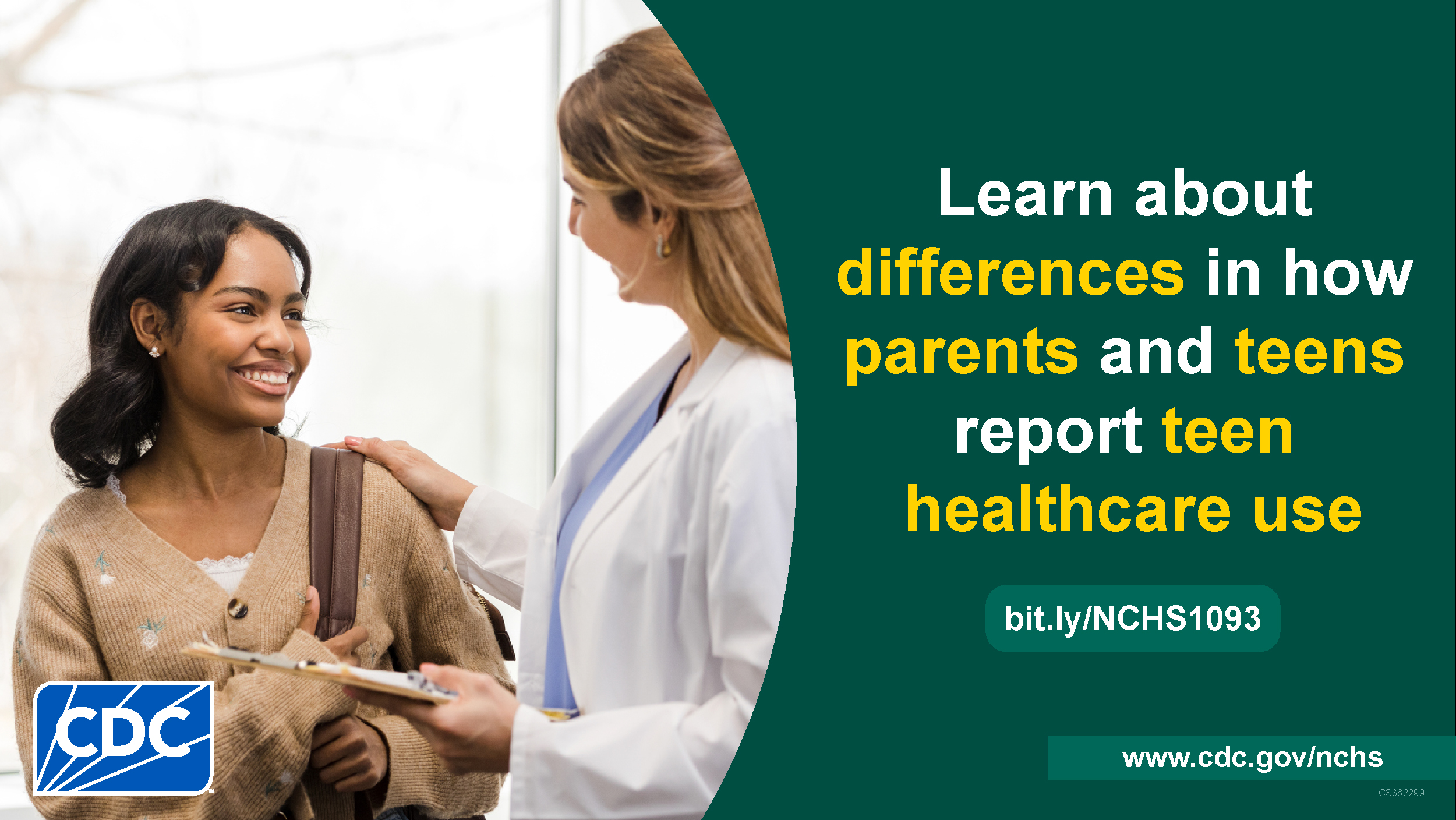Comparing Parent and Teen Reports on Healthcare Use
Posted on by Routine healthcare visits play a crucial role in the lives of adolescents aged 12 to 17. These visits not only help identify health issues but also support teens as they transition into adult healthcare systems. Regular checkups can help teens develop good health habits that they can keep as they grow up, making it important for parents to support their teens’ interactions with healthcare providers.
Routine healthcare visits play a crucial role in the lives of adolescents aged 12 to 17. These visits not only help identify health issues but also support teens as they transition into adult healthcare systems. Regular checkups can help teens develop good health habits that they can keep as they grow up, making it important for parents to support their teens’ interactions with healthcare providers.
A new report, Comparison of Parent and Teen Reports of Teen Healthcare Use: United States, highlights the differences in how parents and teens perceive primary care and their use of healthcare services. The data for this report were collected from the National Health Interview Survey (NHIS), and the NHIS-Teen. In the NHIS, parents answer questions on behalf of teens selected for the survey. Those teens are then invited to participate in NHIS-Teen, with the parents’ approval, to answer many of the same questions directly themselves. This then allows comparison of responses from parents to their teenage children regarding the teens’ use of healthcare services.
Prevalence of Healthcare Use
Parents reported higher rates of healthcare services for their teenagers compared to the teens’ own reports. Key findings include—
- Usual place of care: Almost all parents (96.3%) indicated that their teens had a usual place of care, while only 87% of teens confirmed this.
- Doctor visits: When it comes to doctor visits, 91.4% of parents reported that their teens had seen a doctor in the past year, compared to just 83% of teens.
- Wellness visits: For wellness checkups, 89.8% of parents stated their teens had one, while only 78.1% of teens reported this.
However, there were notable discrepancies in other areas—
- Personal doctor or nurse: While 67.2% of parents stated their teens had a personal doctor or nurse, only 56.6% of teens responded the same way.
- Time alone with the doctor: Less than half of the teens reported having time alone with their doctor—46.5% according to parents and only 37.6% of teens.
Agreement and Disagreement in Reporting
The study also explored how often parents and teens responded the same way about healthcare use. Here are some insights:
- Agreement levels: The percentage of agreement between parents and teens ranged from 58.7% for having a personal doctor or nurse to 88.6% for having a usual place of care.
- Patterns of agreement: The agreement was largely driven by both groups reporting the receipt of healthcare services, with 87.4% stating the teen had a usual place of care.
Because medical records and provider data are not collected with this study, the accuracy of the parents’ and teens’ answers cannot be confirmed. Future reporting may be helpful to improve understanding about the differences in these numbers.
Posted on by

